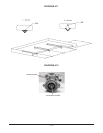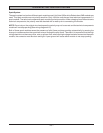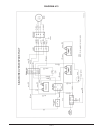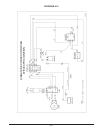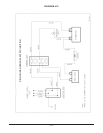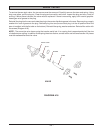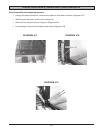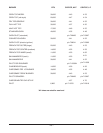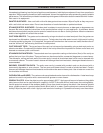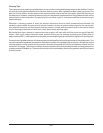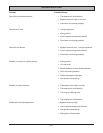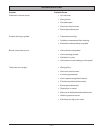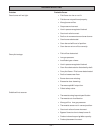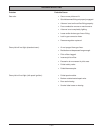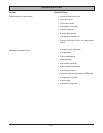
– 27 –
CLEANING PROCEDURES
Housekeeping/cleaning is a vital part of appliance maintenance. Individual procedures will vary from operation to
operation. When properly cleaned and well-maintained, Vulcan-Hart appliances will provide many years of reliable
performance. The information provided is intended to provide general information about the materials which Vulcan-
Hart uses in its equipment.
PAINTED SURFACES - Use a soft cloth with mild detergent and warm water. Wipe off spills as they may occur
with a soft cloth and warm water. Do not use abrasives or harsh chemicals on painted surfaces.
STAINLESS STEEL SURFACES - Stainless steel is resistant to most cleaners, so detergent or degreasers can
be used. Be sure to read the instructions on the product before using it on your appliance. A petroleum-based
stainless cleaner/polish may be used on exterior areas that are not near a cooking surface. Abrasive cleansers
and/or cleaning pads will scratch the surface..
CAST IRON GRATES - The grates can be cleaned by using a wire brush or a steel wool pad. Also, the grates can
be cleaned in a dishwasher, however rust may occur. To help retard rust after water is used, a light coat of cooking
oil can be applied to the grate. If oil is applied, the grates will smoke when the burners are used; therefore the oil
must be “burned off” before using the burner to cook product.
CAST IRON HOT TOPS - The top surface of the cast iron hot top can be cleaned by using a steel wool pad or an
abrasive scrubber. Occasionally the bottom side of the hot top should be inspected for carbon and/or soot and
cleaned as necessary with a wire brush.
STANDARD OVEN INTERIOR - The standard oven has a porcelain coating on the bottom (floor) of the cavity as
well as the inner liner of the door. These surfaces can be cleaned with a commercial degreaser or oven cleaner.
The side walls, ceiling and back wall of the oven cavity is made of aluminized steel, which can be cleaned with
a noncaustic cleaner. The use of caustic cleaner will damage the aluminized steel; a detergent-based cleaner is
recommended.
SNORKEL CONVECTION OVEN - The entire oven cavity is coated with porcelain and can be cleaned with a
commercial degreaser or oven cleaner. The fan cover and blower wheel is made of aluminized steel. Caustic
cleaners will damage the aluminized material and should not be used on these parts. Use of water on or near the
fan should be minimized.
OVEN RACKS and GUIDES - The racks are chrome plated and can be cleaned in a dishwasher. A steel wool soap
pad can be used in conjunction with a commercial de-greaser or oven cleaner.
GRIDDLE PLATES - Allow the plate to cool to approximately 250°F. Apply a small amount of water on the griddle
plate (amount that can be controlled with a spatula). At 250°F the water will boil and loosen the cooking debris,
use the spatula to scrape off the stubborn debris. Use a clean towel to wipe up the debris. Use abrasive (griddle
stone, griddle screen or a product called Scotch Brick) with oil or water. Use the abrasive to remove the carbon
buildup. Wipe the plate with a cloth. Apply a small amount of cooking oil. Spread the oil evenly over the surface.



